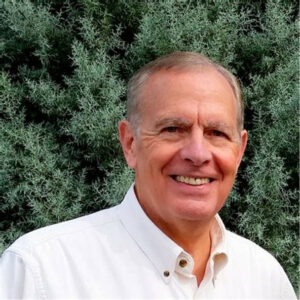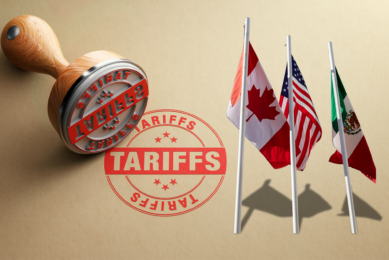The future of dairy farming in Canada and the US

What will dairy farming in North America look like in the years to come? Two scientists recently presented their views on this topic at the Animal Nutrition Conference of Canada.
First, a look at herd size. “Currently, the average herd size in the USA is about 350 cows and in Canada about 90 cows,” notes Dr Jack Britt, professor emeritus at North Carolina State University and chair of the Advisory Committee at the North Carolina Biotechnology Center.
Dairy farming Canada
According to Britt, the US and Canada have very different ways of ‘managing’ herd size: ”Canada has a system that is focused on ‘balancing supply and demand’ by making it very expensive to start a dairy farm or to increase herd size. This [supply management] system makes dairying profitable, but it creates a strong hindrance for farmers or a farm family to start a new dairy herd. The quota ‘fee’ for adding 1 new cow to a herd in Canada varies among provinces, but it can reach CAD$40,000 per head or more. This is not a true free-market system, but it meets the needs of the dairy industry and Canada’s population.”
To further explain, Britt shares a conversation he had with a young Canadian dairy farmer who was using a robotic milking system for almost 40 cows, the maximum the robot can service. “If he added a robot, he could increase herd size by almost double, but the ‘fee’ to add 30 cows to his herd would be 2 to 3 times the cost of the cows and new robotic milking unit,” says Britt.

US dairy farming
However, in the US, the cost of starting a dairy is only related to the cost of land, cows and facilities. US dairy herds are very large west of the Mississippi River, with the average milking herd size in New Mexico now at about 2,500. Britt also notes that in the US, most larger dairy farms milk cows 3 times per day around the clock, using land, animals and equipment to their fullest extent and thus minimising the cost of milk production.
Britt expects the size of US dairy farms to grow, not least because larger farms are more efficient and make more profit per unit of milk. He also foresees the use of more robot milking systems with larger farms and farm labour becoming more expensive. “We may have to start recruiting from other parts of the world,” he notes. “Hourly pay is increasing quickly on farms.”
Consumption trends
Canada has about 41 million people while the US has 341.8 million. US dairy product consumption per capita is increasing at about 1-2 kg annually, due mainly to the increasing Hispanic population and also an overall population that is aging (those over 50 in the US consume the most dairy products).

Sales of products like cheese and yogurt are increasing steadily but milk consumption is on the decline. However, Britt notes that companies are trying to boost milk sales by offering milk products with significantly more milk protein. Indeed, in general, the US seems to have a more creative dairy product selection compared to Canada and also, generally, to European countries.
Britt did several presentations in Germany in December and noted a smaller variety of dairy products there, for example.
Beef revenue stream
Producing crossbred dairy-beef cows for meat is becoming a significant source of revenue for North American dairy farmers. Britt reports that the latest numbers in the US indicate an added US$2 per hundredweight of milk from the sale of dairy beef. It’s true that beef consumption in the US is decreasing, but per capita consumption of beef is still second only to chicken in the meat category.
Britt notes that dairy beef is in demand with processors as it’s much more consistent than beef from commercial beef herds in terms of size, shape, marbling, etc. This is partly due to genetics.
“Typically, dairy beef calves are born from Holstein dams (80%) and Jersey dams (20%),” Britt explains. “In contrast, beef calves come from a ‘hodge-podge’ of breeds.”
Dairy farming – other changes to come
Britt sees several trends in US dairy farming. One is the raising of replacement heifers hundreds or thousands of miles away from the milking cow herd.
“Milk cows need housing, good feed and relief from heat stress, so my view is that more and more milking cows will be in the upper Midwest in the future, particularly as it gets hotter in Arizona, New Mexico, west Texas, etc.,” he notes. “So, we will see large milking herds in the more northern states and the replacement heifers will be raised several states to the south where no physical housing may be needed. There are now heifer ranches in the Kansas and Nebraska areas that have over 10,000 head on one huge site. And these large operations provide extremely good care because they are paid on the basis of health and growth.”
Dairy farm ownership in the US is also evolving. Britt explains that there are now several farm group arrangements where farmers share common facilities and manage all cows in the same way. “These units are growing quickly, because they have developed ‘standard’ ways of doing things,” he says. “They also have power in purchasing and selling because of their scale.”
Sustainability
Dr Carlyn Peterson, dairy technical manager at Selko (a Nutreco brand that offers specialty feed additives) also presented at the Animal Nutrition Conference of Canada about the future of dairy farming, with a focus on sustainability. She notes that the US dairy herd is incredibly efficient, with the fourth-largest herd size of any country on earth, but the second-largest production level – with more improvements to come.
In general, improvements in dairy cow productivity are due to increased heifer growth rate, decreased age at first calving, use of balanced total mixed rations accounting for age and stage of lactation, genetic selection (for increased productivity, longevity and efficiency of dairy cows) and increased use of artificial insemination.
On other sustainability fronts, dairy farmers are feeding cows less protein than ever, using more effective feed additives and achieving better crop production and manure management.
Looking forward, Peterson says, “I think small changes implemented together will continue to improve the efficiency of our dairy systems, leading to improved environmental sustainability. Additionally, there are many promising technologies to reduce enteric methane we haven’t even begun to implement. Also, as we get closer to ‘precision feeding’ or precisely meeting the requirements of the animal, as well as practices like increasing average number of lactations and improving animal handling and husbandry, this will also continue to improve environmental sustainability.”
However, there are still many questions regarding ‘translating theory to practice’ when it comes to dairy farming and sustainability, notes Peterson, particularly for the enteric methane mitigation strategies.
“We are largely unaware of how additives combine, whether their results are fully additive or some combination of addition or even subtraction,” she says. “Research is integral for us to understand how we can implement these technologies into individual systems, as they vary so greatly.”
Join 13,000+ subscribers
Subscribe to our newsletter to stay updated about all the need-to-know content in the dairy sector, two times a week.










